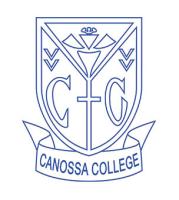| Language Policy |
1. Our school mainly adopts English as the medium of instruction.<br>2. To build an English Language-rich environment, Students are encouraged to use English on campus. Announcements are to be made in English. Students are responsible for sharing and leading the prayers in English during morning assemblies.<br>3. Elite class is arranged in S.1 and S.2.<br>4. Tutorial lessons outside class time are provided for junior form students failing Chinese, English and Mathematics tests and exams.<br>5. S.5 and S.6 students taking only two electives have to attend extra Chinese, English and Mathematics lessons.<br>6. Academic websites and e-learning resources are provided to promote extensive reading and self-directed learning. <br>7. To help students adjust to the new medium of instruction, the school adopts a Language-Across-Curriculum approach that integrates the learning of English and EMI subjects in junior levels. |
| Learning and Teaching Strategies |
1. Integrating values education, character formation and development of Canossian spirit into the formal curriculum.<br>2. Enhancing students' language ability through cross-curricular collaboration.<br>3. Enriching students' knowledge, exposure and various skills through experiential learning.<br>4. Developing students' ability to learn how to learn.<br>5. Applying e-learning pedagogy to elevate self-directed learning and motivation.<br>6. Equipping students with study skills, thinking skills and speaking skills to facilitate learning effectiveness.<br>7. Promoting the habit of taking notes and keeping vocabulary book.<br>8. Providing study skills training to S.1 students.<br>9. Organizing school-based STEM curriculum in class and STREAM-related activities after school.<br>10. Implement reading across curriculum in junior form to expand students' reading horizons. |
| School-based curriculum |
1. Electives: 3X. Senior students can take three electives and Mathematics Extended Parts (M1/M2).<br> 2. Curriculum highlights: Life Education and Religious Education are implemented in all classes to cultivate positive values and facilitate character formation and whole person development. |
| Approach to Catering for Learner Diversity |
1. All subject panels formulate a plan to cater for learner diversity. <br>2. Outstanding students are selected to join our Talent Pool for special training. <br>3. Recommend and subsidize students to join the training for gifted students offered by the EDB and tertiary institutes. <br>4. Enrichment programmes are offered by different subjects. |
| Approach to Integrated Education |
Our school adopts the Whole School Approach to Integrated Education. Student Support Team is formed. Members include Special Educational Needs Coordinator, core-subject teachers, school social workers, student counsellor and Education Psychologist. Our school flexibly and strategically deploys various grants to provide comprehensive services for the students through the 3-tier support model. Assessment accommodations are formulated to address the needs of individual students in order to allow students to display their competencies. |
| Education Support for Non-Chinese Speaking (NCS) Students |
|
| Home-School Co-operation |
1. Arranging talks related to the school's educational objectives;<br>2. Parents' Forums are provided for parents of each level to keep them updated with current news about students' progress in learning and related school policies; <br>3. Parent Committee members and volunteers helping in organizing activities;<br>4. Organizing various leisure activities to enhance communication between parents and teachers; <br>5. Parents visiting the campus and tasting the food of lunch boxes to ensure good quality of the lunch boxes. |
| School Ethos |
Simplicity is a characteristic of the school. A spirit of warmth and care pervades all relationships with two form teachers in S.1 to S.5 and senior students as big sisters for S.1 students through the Foster Prefects Scheme. Our major concerns always focus on students' character formation and development of students' potential. |
| School Development Plan |
1. Forming students' good habit and personal qualities.<br>2. Enhancement of study skills and support for students.<br>3. Development of career and life learning for all students. |
| Teacher Professional Training and Development |
1. To equip teachers with the strategies and abilities to implement the school plans, staff development programmes always align with the major concerns of the school. <br>2. To enhance teachers' capability, collaborative lesson planning and sharing of teaching experience are regularly arranged.<br>3. All teachers exchange lesson observation with peers or panel heads every year.<br>4. New teachers are provided with orientation and each is supported by an experienced teacher. |
| Life-wide Learning |
Besides the four Houses and Student Council, we have 43 extra-curricular activity clubs/societies under six categories: Academic, Interest, Music, Sports, Community Service and Religious Affairs. To stretch students' potential, most activities of the clubs/societies are run by students. All S.1 students are required to join either a music or sports group for a diversity of development. All S.1 to S.4 students must join one activity club/society. |
